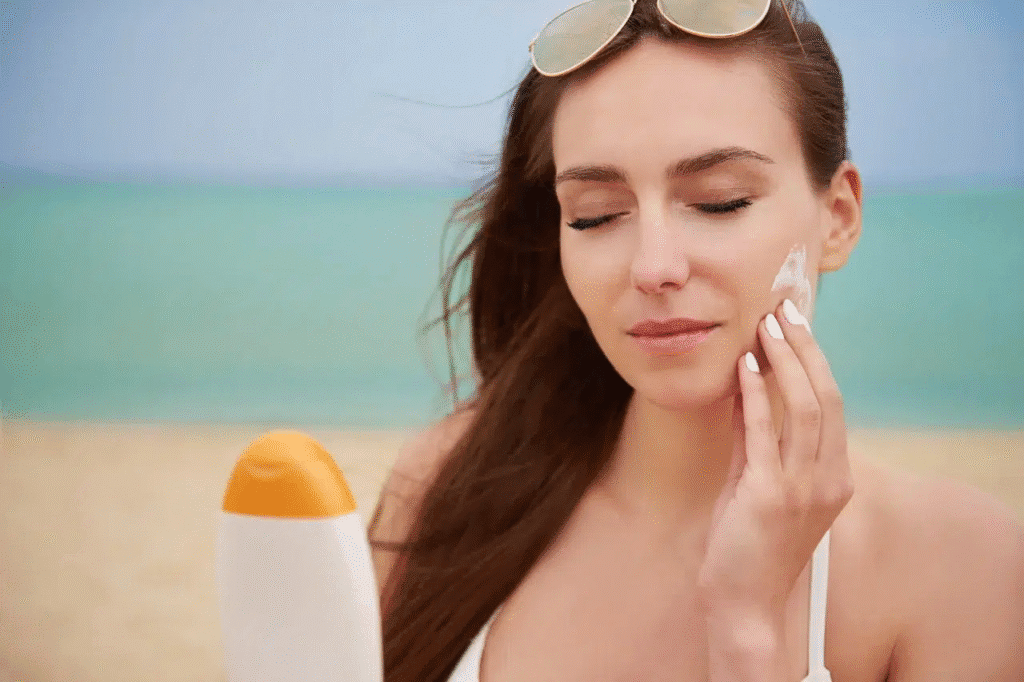For those with oily skin, finding the right skincare routine can often feel like a struggle. With the abundance of products available and misconceptions about skincare, it can be challenging to find what works best. Common advice like “cleanse your face three times a day” or “skip the moisturizer” can make things worse, especially when it comes to choosing the right sunscreen.
Sunscreens have long been associated with a greasy, sticky feeling, often blamed for clogged pores, blackheads, and acne. But with advancements in skincare formulations, there are now sunscreens designed specifically for oily skin that not only protect against harmful sun damage but are also lightweight, non-greasy, and comfortable to wear.
If you’ve been struggling with oily, acne-prone skin, we’re here to guide you on how to choose the right sunscreen and recommend some of the best options for oily skin.
What is Oily and Acne-Prone Skin?
Oily skin is characterized by excessive oil (sebum) production, which often leads to a greasy appearance, especially in the T-zone (forehead, nose, and chin). When this excess oil clogs pores, it can result in blackheads, whiteheads, and acne breakouts, making the skin not just oily but acne-prone as well.
The overactive sebaceous glands responsible for producing this excess oil can be triggered by various factors such as genetics, hormones, diet, and skincare habits. Identifying oily skin is simple with the tissue test: wash your face and wait an hour. Then, press a tissue on your forehead, nose, and cheeks. If you notice oil on the tissue, you likely have oily skin.
Do You Need Sunscreen for Oily Skin?

It’s a common misconception that oily skin is protected from sun damage, but this is far from the truth. Even if you have oily skin, you are still at risk for sunburn, premature aging, and skin damage. That’s why using a sunscreen that’s suitable for oily and acne-prone skin is essential for adequate protection without worsening the condition.
How to Choose the Right Sunscreen for Oily Skin
While sunscreen has traditionally been seen as greasy and heavy, modern formulations are now designed with oily skin in mind. Here are key factors to consider when selecting the best sunscreen for oily skin:
- Non-Comedogenic Formula
Look for sunscreens labeled as non-comedogenic. These are designed to not clog pores, which is crucial for avoiding acne breakouts. Non-comedogenic sunscreens are typically lightweight, blend in easily, and won’t add excess oil to your skin. - Oil-Free Formulation
Opt for oil-free sunscreens. These formulations are lightweight and absorb quickly without leaving behind any greasy residue. They provide the necessary sun protection while helping control shine, leaving a fresh, non-greasy finish. - Matte Finish
If you struggle with unwanted shine throughout the day, choose a sunscreen with a matte finish. These sunscreens help control oil production and keep your skin looking balanced without feeling heavy. - Broad-Spectrum Protection
Ensure your sunscreen offers broad-spectrum protection, meaning it protects against both UVA and UVB rays. Look for sunscreens with an SPF of 35 or higher and PA +++ protection. - Skin-Loving Ingredients
Look for ingredients like niacinamide, green tea, cica, or hyaluronic acid. These ingredients help soothe inflammation, reduce excess oil, and hydrate the skin without clogging pores. - New-Gen Filters
New-generation sunscreen filters are gentler on the skin and provide long-lasting protection without causing irritation. These are ideal for sensitive or acne-prone skin.
How to Apply Sunscreen for Oily Skin
Proper application is just as important as choosing the right sunscreen. Here’s how to apply sunscreen to your oily skin:
- Start with Clean Skin
Wash your face with a gentle cleanser to remove any dirt, oil, or impurities before applying sunscreen. - Moisturize
Even oily skin needs hydration. Use a lightweight, non-comedogenic, oil-free moisturizer to keep your skin balanced before applying sunscreen. - Use the Right Amount
Apply about two finger-lengths worth of sunscreen to cover your face and neck adequately. Don’t skimp on the amount, as sunscreen works best when applied generously. - Reapply Throughout the Day
Reapply sunscreen every two to three hours, especially if you’re spending time outdoors or sweating. Sunscreen needs to be reapplied regularly for consistent protection.
Plum’s Top Recommendations for Sunscreens for Oily Skin
Here are some of the best sunscreens for oily skin that are lightweight, non-greasy, and formulated with skin-loving ingredients:
- Plum Green Tea Day-light Sunscreen Gel SPF 35 PA+++
This gel-based sunscreen is designed specifically for oily, acne-prone skin. It has a lightweight, non-greasy formula with the benefits of green tea to fight acne and control oil production. - Neutrogena UltraSheer Dry-Touch Sunscreen SPF 50+
Known for its ultra-light, dry-touch formula, this sunscreen absorbs quickly, leaving no greasy residue while providing high SPF protection. - La Roche-Posay Anthelios Clear Skin SPF 60
This sunscreen is ideal for oily and acne-prone skin, offering broad-spectrum protection without clogging pores. It has a matte finish and helps control shine throughout the day.
Conclusion
Managing oily skin doesn’t have to be a struggle. With the right products, including a sunscreen specifically formulated for oily skin, you can protect your skin from the harmful effects of the sun without exacerbating acne or excess oil. Remember to choose a sunscreen that’s non-comedogenic, oil-free, and offers broad-spectrum protection. Don’t skip this essential step—your skin will thank you!
Also Read : 7 Reasons Why a Skin Care Routine is Essential



